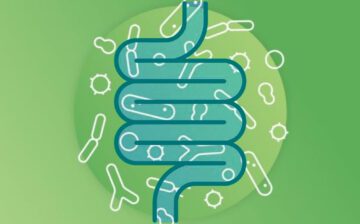
What is the Microbiome?
Our body is inhabited by trillions of bacteria, fungi, and viruses which collectively live on and in our body as a community known as microbiota. Their genome is the microbiome.

The world’s population is aging. According to the United Nations 2019 Revision of World Population Prospects (link) as much as one in six people worldwide will be aged 65 or older by 2050. Living independently at home is a common wish for aging individuals but requires a certain state of health and functional capacity. The loss of muscle quality and function that occur with aging is a major concern to living independently as a reduction or loss in muscle function often relates directly or indirectly, to increased morbidity and mortality.
Dietary proteins are widely recognized to play a major role in muscle health by providing the amino acids, especially the branched-chain amino acid leucine, necessary to stimulate muscle protein synthesis and/or suppressing protein breakdown. Adequate intake of protein is particularly important in older adults to prevent the loss of muscle mass and function. But how much protein should the elderly consume and why this may differ from younger adults?
Baum and colleagues present the current knowledge on dietary protein intake and muscle health in the elderly population in a review published in the Journal Nutrients (link). For adults over 18 years old, the recommended daily allowance (RDA) and acceptable macronutrient distribution range (AMDR) for protein are 0.8 g/kg/day and 10-35% of daily energy intake, respectively. However, the authors pointed out that a number of experts have recommended higher protein intake for elderly adults in the range of 1.2 to 2.0 g/kg/day which is significantly higher than the current RDA. These recommendations are supported by growing evidence suggesting that aging induces a decrease in the muscle protein synthesis response to anabolic stimulation. As a result, elderly individuals may be less responsive to low doses of amino acid than younger people.
Baum et al. present findings suggesting that the lack of responsiveness can be overcome by increasing protein (or essential amino acid) intake. They suggested that protein intake corresponding to the higher end of the AMDR (30-35% of total caloric intake) may be beneficial in older populations. However, they acknowledged the practical challenges of achieving this level of protein intake and pointed out that other factors, such as the quality (amino acid content and digestibility) and the energy content of the protein sources, need to be taken into consideration.
Baum JI, Kim I-Y, Wolfe RR. Protein consumption and the elderly: what is the optimal level of intake? Nutrients 2016; 8:359.
MPC/MPI contains all essential amino acids, including branched-chain amino acid leucine. Click here to find out more.